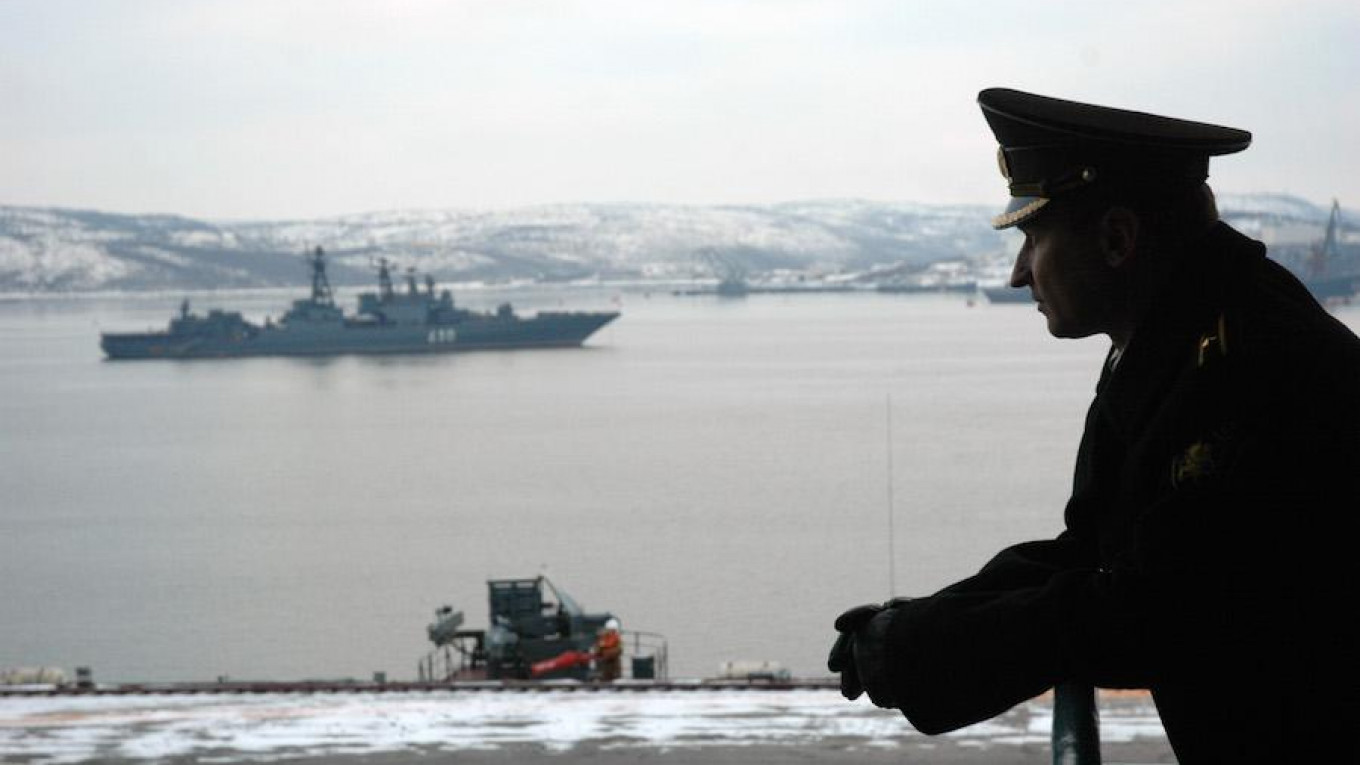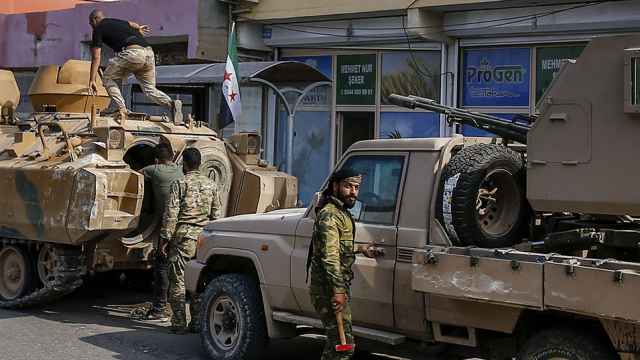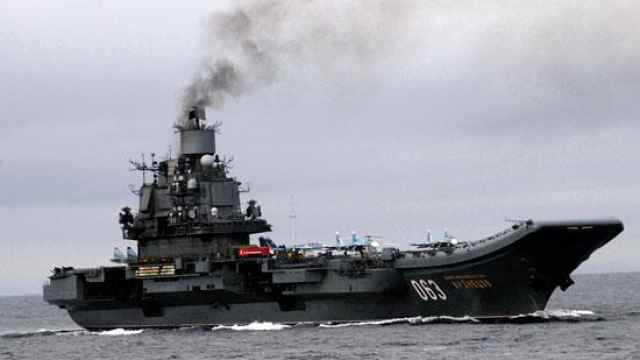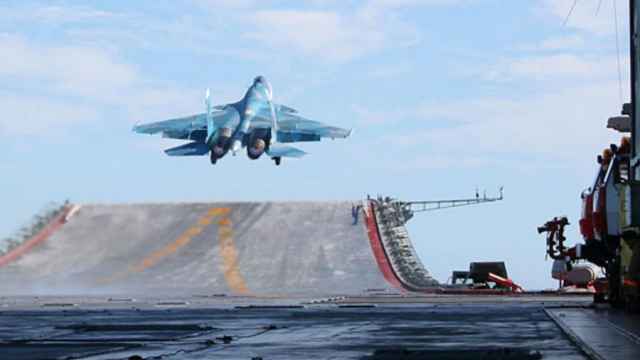If the RBC news agency's estimates are correct, the Russian military has spent roughly $168 million deploying its lone aircraft carrier, the Admiral Kuznetsov, to the Mediterranean to assist in airstrikes in Syria. RBC tallied up the material costs incurred by its air wing, the munitions expended, and the fuel consumed. To keep the figure conservative, it discounted regular costs associated with ship maintenance, which would have burned through cash regardless.
The Kuznetsov's deployment is expected to end around Feb. 9, when the ship and its accompanying battlegroup return to Russia's Northern Fleet headquarters in Severomorsk. The aircraft carrier first departed for Syria on Oct. 15.
According to Russian defense officials, the Kuznetsov conducted 420 sorties while floating in the Mediterranean — a figure that independent analysts say Moscow exaggerates.
The single largest material
cost, according to RBC, was incurred by Kuznetsov's air wing. The
cost of combat operations in Syria, when calculated for the claimed
420 missions, is 1.5 billion rubles ($25 million), or 3.5 million
rubles per sortie ($59,000).
Russian military specialist Michael Kofman, a fellow at the Virginia-based CNA think tank, says the real sortie rate was probably much lower — about 150 missions during the deployment. This brings the actual cost of the air wing down to 525 million rubles ($8.9 million).
During its deployment in Syria, the Kuznetsov lost two aircraft to technical failures, a MiG-29 and an Su-33. The unit cost of these aircraft varies, but in a recent contract with India the value of a MiG-29 was $51 million, RBC reported, citing Konstantin Makienko, deputy director of the Moscow-based Center for the Analysis of Strategies and Technologies.
Because the Su-33 is no longer in production and was never sold abroad, estimating the cost of its loss is harder. RBC estimates the cost of replacing the lost MiG and lost Su-33 was upwards of 6.7 billion rubles ($112.9 million) — the price tag for two new MiG-29s.
During the trip, the Kuznetsov travelled 5,300 nautical miles (9,800 kilometers). On this trip, RBC estimates it burned up to 13,600 tons of fuel, costing an estimated 303.3 million rubles ($5.11 million). When taking into account the costs of Kuznetsov's escort ships, the total fuel expenditure for the battlegroup rises to 1.5 billion rubles ($25 million).
Other expenditures tallied by RBC include 1.47 billion rubles ($24.8 million) in combat bonuses, and up to 325.5 million rubles ($5.5 million) in food for the crew.
Kuznetsov is slated to go into the yard for an extensive modernization after returning to Severomorsk. The cost of that project is unclear.
A Message from The Moscow Times:
Dear readers,
We are facing unprecedented challenges. Russia's Prosecutor General's Office has designated The Moscow Times as an "undesirable" organization, criminalizing our work and putting our staff at risk of prosecution. This follows our earlier unjust labeling as a "foreign agent."
These actions are direct attempts to silence independent journalism in Russia. The authorities claim our work "discredits the decisions of the Russian leadership." We see things differently: we strive to provide accurate, unbiased reporting on Russia.
We, the journalists of The Moscow Times, refuse to be silenced. But to continue our work, we need your help.
Your support, no matter how small, makes a world of difference. If you can, please support us monthly starting from just $2. It's quick to set up, and every contribution makes a significant impact.
By supporting The Moscow Times, you're defending open, independent journalism in the face of repression. Thank you for standing with us.
Remind me later.






